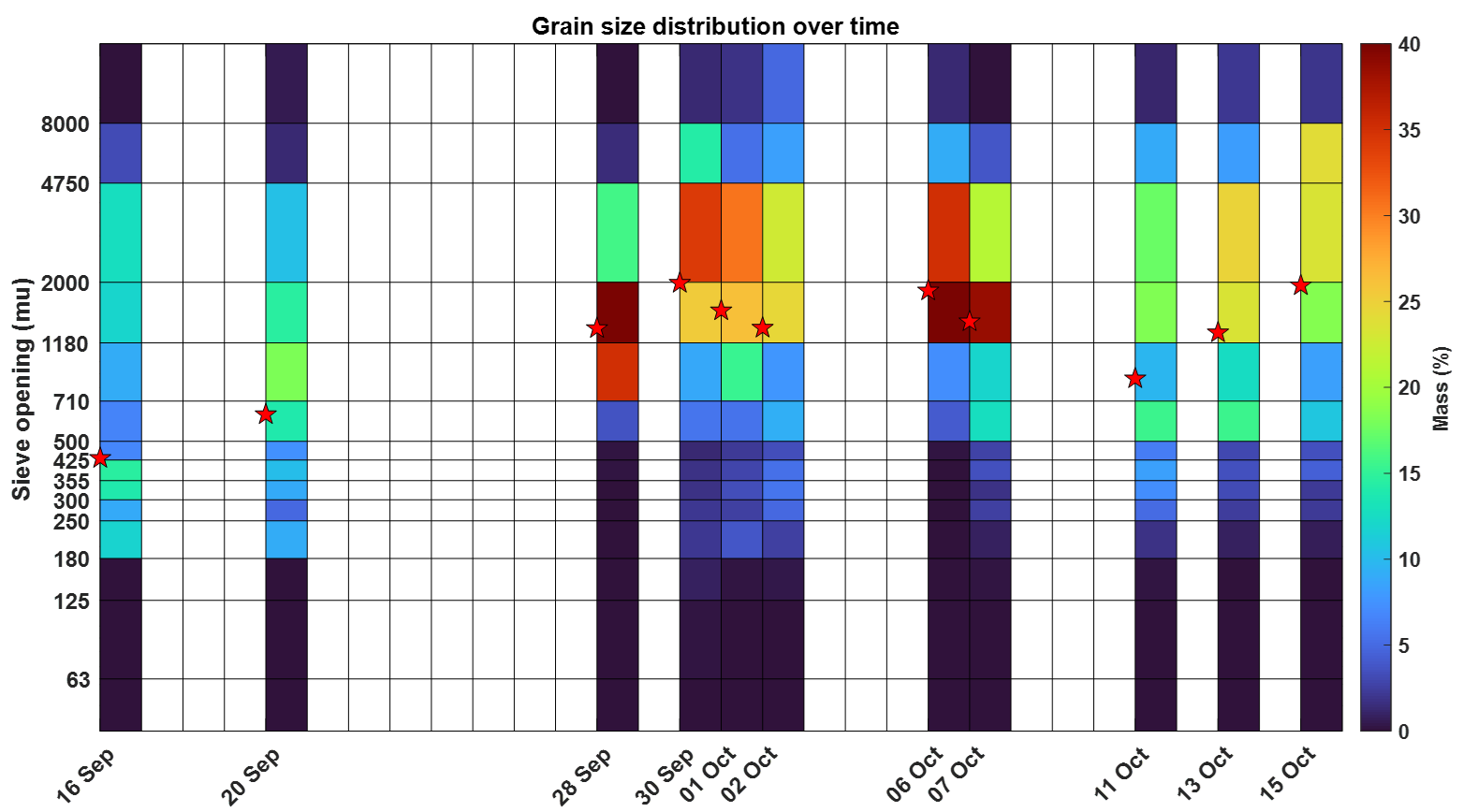M. klein Obbink1*, J.W. Bosma1, J.B. Woerdman1, M.A. van der Lugt2, T.D. Price1
1 Utrecht University
2 Delft University of Technology
*corresponding author:
Introduction
Since the 1990's sand nourishments are increasingly used to improve coastal safety at the wave-dominated North Sea coast. Generally, the nourished sediment is kept similar to the naturally occurring sediment and in most cases consists of well-sorted sand. However, recently, sandy beaches are also used to strengthen dikes in regions that are not wave-dominated. The Prins Hendrikzanddijk (PHZD) is an example of such a sandy retrofit, located on leeward side of the Dutch barrier island of Texel. Additionally, a layer of coarse sediment was added on top of that particular beach in order to limit erosion. This has resulted in a complex spatiotemporally varying sediment composition in a mixed wave-current environment. It is expected that this combination of factors results in highly variable and complex sediment entrainment and transport processes, which are not yet fully understood. This research focusses on the temporal variability in the sediment composition and how this affects sediment entrainment and suspended transport at the PHZD.
Methods
During a 6-week (SEDMEX; mixed SEDiments in Mixed Energy eXperiment) field campaign in early autumn at the PHZD, instruments were deployed at 6 alongshore locations, of which two had additional instruments in the cross-shore. The collected data consist of measurements on waves, currents and sediment (composition and transport). A total of approximately 150 sediment samples were collected in the intertidal area at different cross-shore locations and over varying time intervals. Wave and current shear stresses were used to identify when the various sediment fractions could have been in motion. This was then compared to concentration measurements derived from Optical Backscatter Sensors (OBS).
Results
The collected sediments show a distinct variability of the grain-size distribution over time in response to the waves and tides. It is observed that sediment is primarily entrained by wave stirring and transported by tidal currents. The presence of shells and large mineral grains suggest influence of hiding-and-exposure effects. However, the large temporal variability in the grain-size distribution indicates that these mechanisms are not constant over time.

Figure 1: The grain-size distribution over time. The red stars indicate the D50 of the sediment sample which were collected just below the low mean water line.
I. Surname1*, F.N. Another-Surname2 , Y. Next-Surname2
1 University Name, Country; 2 Organization Name, Country
* Corresponding author: mail.name@organization.org


